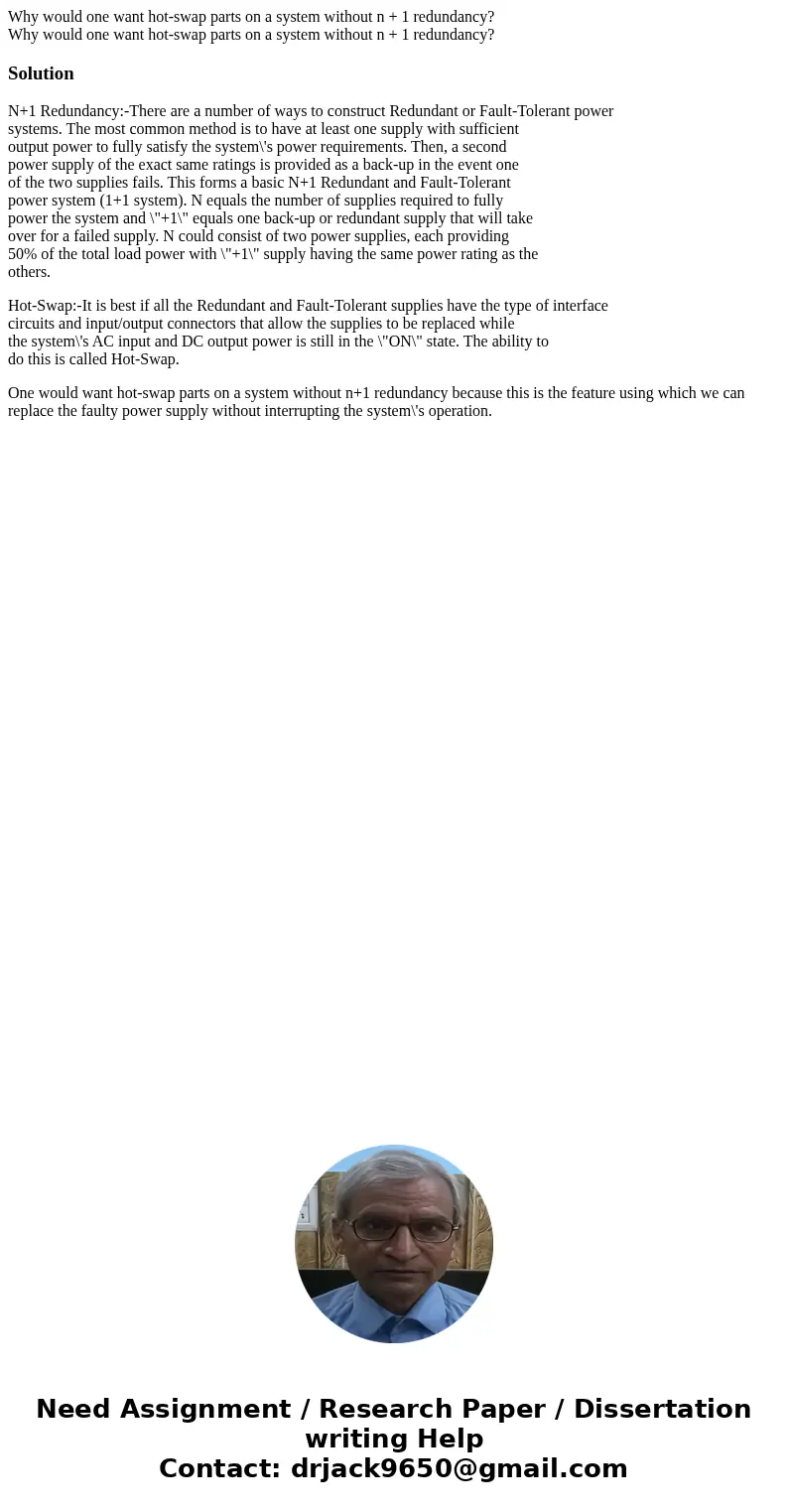Why would one want hotswap parts on a system without n 1 re
Solution
N+1 Redundancy:-There are a number of ways to construct Redundant or Fault-Tolerant power
systems. The most common method is to have at least one supply with sufficient
output power to fully satisfy the system\'s power requirements. Then, a second
power supply of the exact same ratings is provided as a back-up in the event one
of the two supplies fails. This forms a basic N+1 Redundant and Fault-Tolerant
power system (1+1 system). N equals the number of supplies required to fully
power the system and \"+1\" equals one back-up or redundant supply that will take
over for a failed supply. N could consist of two power supplies, each providing
50% of the total load power with \"+1\" supply having the same power rating as the
others.
Hot-Swap:-It is best if all the Redundant and Fault-Tolerant supplies have the type of interface
circuits and input/output connectors that allow the supplies to be replaced while
the system\'s AC input and DC output power is still in the \"ON\" state. The ability to
do this is called Hot-Swap.
One would want hot-swap parts on a system without n+1 redundancy because this is the feature using which we can replace the faulty power supply without interrupting the system\'s operation.

 Homework Sourse
Homework Sourse